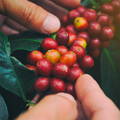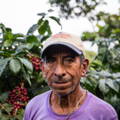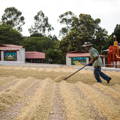Seed to Cup
How Do We Source and Roast Our Coffee?


Sourcing
Roasting

As coffee roasters, we strive to highlight the flavors that are naturally inherent in our coffees. We believe that coffee contains its full potential the moment it is picked from the coffee tree and our job through the roasting process is to keep as much of that potential as possible. We ensure we properly develop our coffees during the roast, by locking in complexity and sweetness, but avoiding over roasting so you can taste the coffee not the roast.
We carefully monitor the temperature and time to achieve the desired roast level. Through this process, we have found that coffee roasting is a delicate balance of science and craftsmanship, as we strive to bring out the unique nuances of different coffee origins and varieties. The process requires expertise, intuition, and an acute understanding of the beans' reactions to heat.
As a result, we craft deliciously sweet, vibrant, and complex coffees for everyone to enjoy, everyday. Get a more in depth look at the complete process below.
The Journey from Seed to Cup

The Coffee Cherry
Processing

Natural Process
Washed Process
Honey Process

Sorting and Rating
Small Batch Testing





